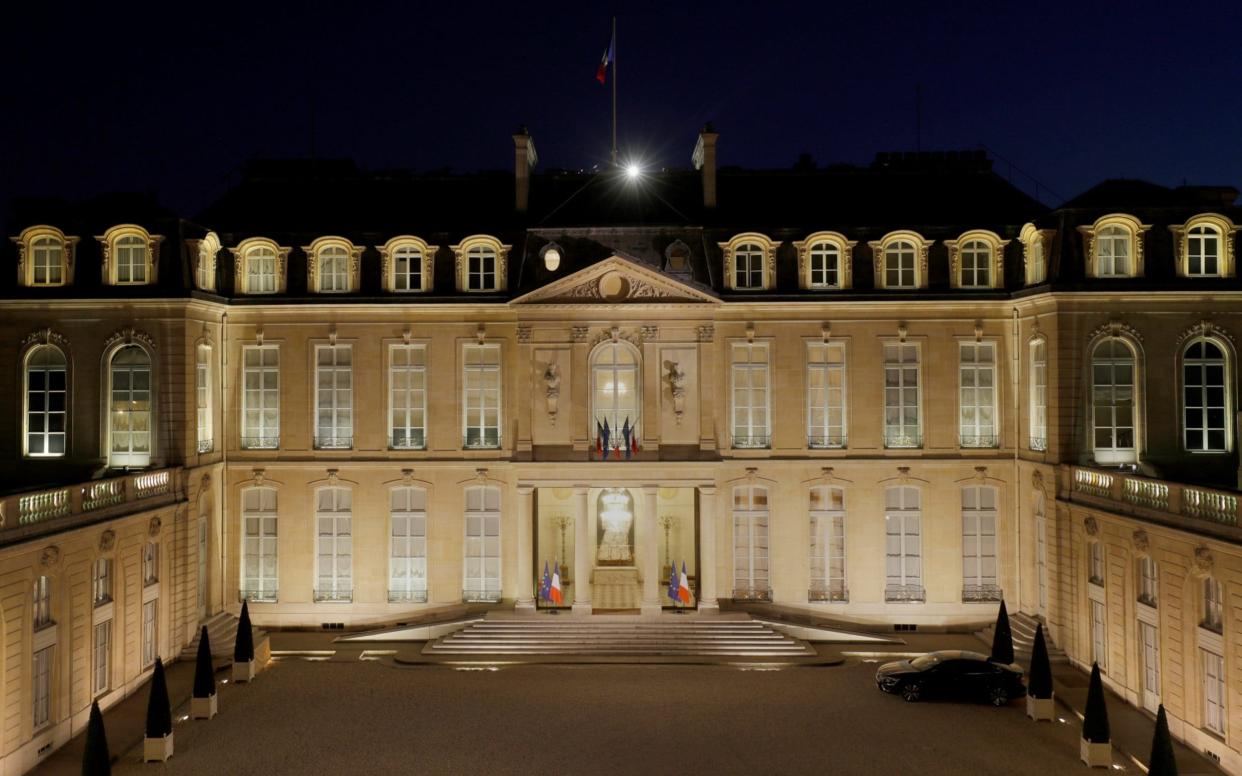French detectives investigate disappearance of 57,000 items from presidential residences including valuable artworks and antiques

French detectives are investigating the mysterious disappearance of hundreds of valuable works of art and pieces of antique furniture from the Elysée Palace and other presidential residences.
The 700 missing items include bronze sculptures and statuettes, Empire chairs and a Restoration dining table from the 19th century, an 18th-century Régence chair and 17th-century Savonnerie carpets. Investigators are unsure if they have been misplaced, forgotten and left to gather dust in a storeroom, or stolen.
In the past seven years, the Elysée has lodged 81 criminal complaints over the suspected theft of 122 sculptures, paintings or photographs, and 546 pieces of furniture and other objects, believed to be worth tens of thousands of pounds.
A police source said: “There appears to be a shocking degree of carelessness in keeping track of things. These items weren’t taken from an auction house or a private apartment, but from the president’s official residences where security is extremely high. Investigators will be looking at whether they were stolen by staff.”
Paris is notorious for art and jewellery thefts, but the disappearance of so many precious historical and cultural artefacts from official residences is embarrassing for the political establishment.
Earlier this month police said they were investigating the suspected theft of seven works of art from the Elysée, but it has now emerged that many more have vanished.
If crockery is included, the list of missing objects totals a staggering 57,165 items, with each saucer and cup counted individually. A porcelain serving dish spotted on eBay in 2014 was identified as part of a set ordered by the President René Coty in the 1950s.
The latest revelations follow a meticulous stocktaking exercise. Officials scrutinised presidential inventories of artworks and furnishings since the 19th century and checked them against what was found in the residences.
Items have vanished from the Pavillon de la Lanterne, the president’s weekend retreat in Versailles, Fort Brégançon on the Mediterranean, where Emmanuel Macron received Theresa May last summer, and several other state-owned châteaux and mansions used by the president, in addition to his main residence, the Elysée Palace.
Thieves may have profited from a lack of detailed inventories for items such as dinner services, rugs and easily moveable furniture such as chairs.
It was only in 2017 that a reliable inventory was finally drawn up after a five-year effort to trace missing items. Some 50 misplaced items were found. A bronze Louis XV chandelier thought to have been at the Elysée was found in a storeroom, and two sculptures that should have been at the Elysée were found in the Hôtel de Marigny, where the president receives visiting foreign dignitaries.
Surveillance has now been tightened, with staffers obliged to sign a declaration listing every object found in their office when they take up their posts. When they leave, a second inventory is taken and the two are compared.
The police source said: “The president’s office has often been slow to report suspected thefts to the police. It’s taken two years in some cases, which would have given thieves plenty of time to sell the objects without being noticed.”
Brigitte Macron, the first lady, is keen to refresh the decor of the Elysée and her efforts to spruce up the palace have led to the replacement of a number of older furnishings and traditional artworks with contemporary oeuvres.
Last year the Macrons became embroiled in a row over a new dinner service they ordered to replace the palace’s decades-old crockery, some of which dated back to the 1950s. The Elysée reported that it had cost €50,000 (nearly £45,000) but the satirical weekly Le Canard Enchaîné said the true cost to taxpayers was closer to €500,000, which was the amount the state-subsidised factory would have charged private collectors for the same service.

